L. B. Soros
Preference-Learning Emitters for Mixed-Initiative Quality-Diversity Algorithms
Oct 25, 2022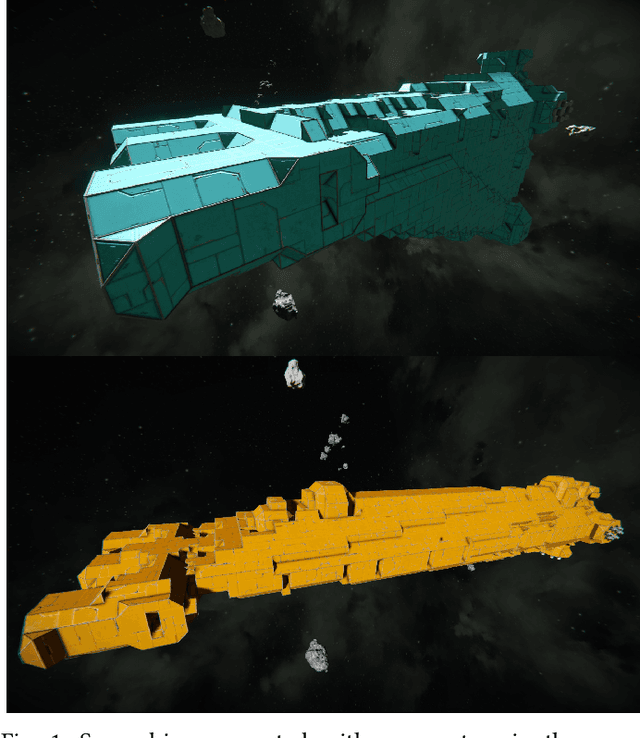
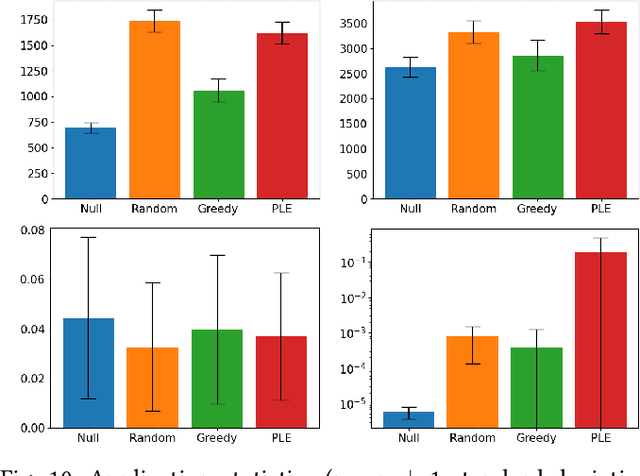

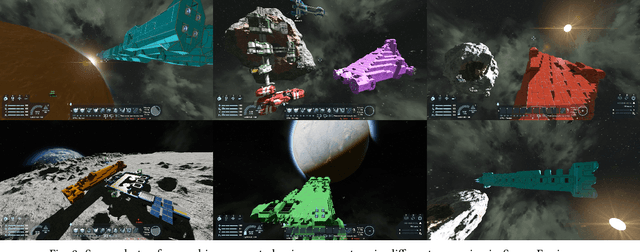
Abstract:In mixed-initiative co-creation tasks, where a human and a machine jointly create items, it is valuable for the generative system to provide multiple relevant suggestions to the designer. Quality-diversity algorithms have been commonly used for this, as they can provide diverse suggestions that are representative of salient areas of the solution space, showcasing solutions with both high fitness and different properties that the designer might be interested in. Since these suggestions are what drives the search process, it is important that they provide the right inspiration for the designer, as well as not stray too far away from the search trajectory, i.e., they should be aligned with what the designer is looking for. Additionally, in most cases, many interactions with the system are required before the designer is content with a solution. In this work, we tackle both of these problems with an interactive constrained MAP-Elites system by crafting emitters that are able to learn the preferences of the designer and use them in automated hidden steps. By learning such preferences, we remain aligned with the designer's intentions, and by applying automatic steps, we generate more solutions per system interaction, giving a larger number of choices to the designer and speeding up the search process. We propose a general framework for preference-learning emitters and test it on a procedural content generation task in the video game Space Engineers. In an internal study, we show that preference-learning emitters allow users to more quickly find relevant solutions.
Surrogate Infeasible Fitness Acquirement FI-2Pop for Procedural Content Generation
May 12, 2022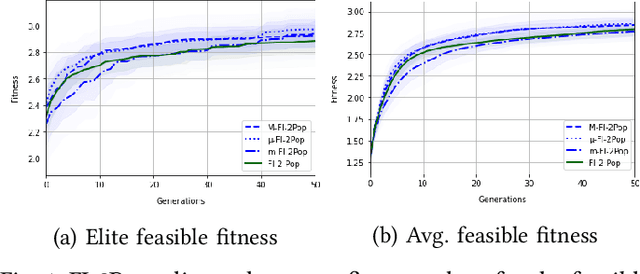
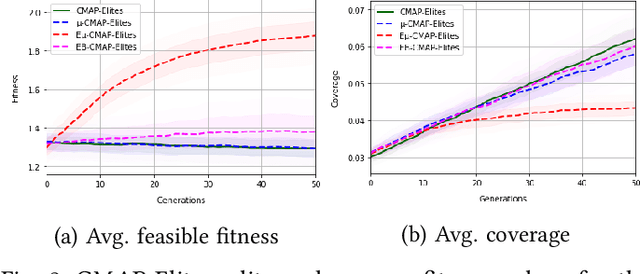
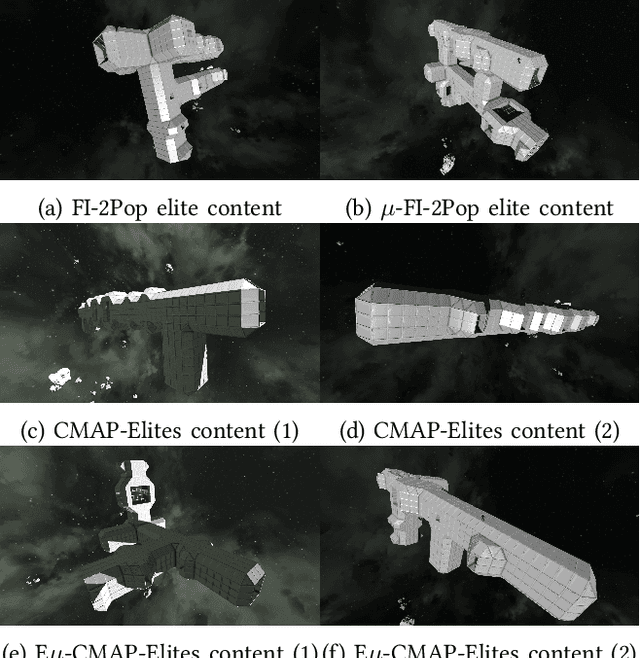
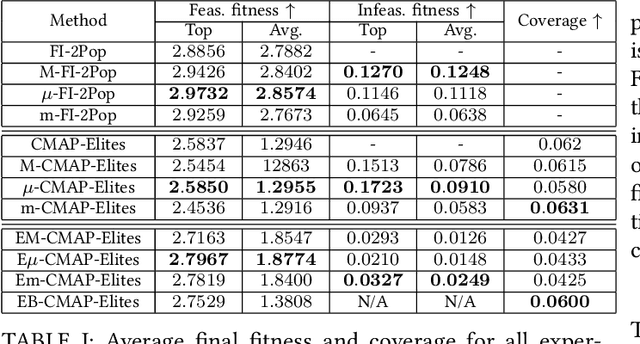
Abstract:When generating content for video games using procedural content generation (PCG), the goal is to create functional assets of high quality. Prior work has commonly leveraged the feasible-infeasible two-population (FI-2Pop) constrained optimisation algorithm for PCG, sometimes in combination with the multi-dimensional archive of phenotypic-elites (MAP-Elites) algorithm for finding a set of diverse solutions. However, the fitness function for the infeasible population only takes into account the number of constraints violated. In this paper we present a variant of FI-2Pop in which a surrogate model is trained to predict the fitness of feasible children from infeasible parents, weighted by the probability of producing feasible children. This drives selection towards higher-fitness, feasible solutions. We demonstrate our method on the task of generating spaceships for Space Engineers, showing improvements over both standard FI-2Pop, and the more recent multi-emitter constrained MAP-Elites algorithm.
Transfer Dynamics in Emergent Evolutionary Curricula
Mar 03, 2022



Abstract:PINSKY is a system for open-ended learning through neuroevolution in game-based domains. It builds on the Paired Open-Ended Trailblazer (POET) system, which originally explored learning and environment generation for bipedal walkers, and adapts it to games in the General Video Game AI (GVGAI) system. Previous work showed that by co-evolving levels and neural network policies, levels could be found for which successful policies could not be created via optimization alone. Studied in the realm of Artificial Life as a potentially open-ended alternative to gradient-based fitness, minimal criteria (MC)-based selection helps foster diversity in evolutionary populations. The main question addressed by this paper is how the open-ended learning actually works, focusing in particular on the role of transfer of policies from one evolutionary branch ("species") to another. We analyze the dynamics of the system through creating phylogenetic trees, analyzing evolutionary trajectories of policies, and temporally breaking down transfers according to species type. Furthermore, we analyze the impact of the minimal criterion on generated level diversity and inter-species transfer. The most insightful finding is that inter-species transfer, while rare, is crucial to the system's success.
CLIPDraw: Exploring Text-to-Drawing Synthesis through Language-Image Encoders
Jun 28, 2021



Abstract:This work presents CLIPDraw, an algorithm that synthesizes novel drawings based on natural language input. CLIPDraw does not require any training; rather a pre-trained CLIP language-image encoder is used as a metric for maximizing similarity between the given description and a generated drawing. Crucially, CLIPDraw operates over vector strokes rather than pixel images, a constraint that biases drawings towards simpler human-recognizable shapes. Results compare between CLIPDraw and other synthesis-through-optimization methods, as well as highlight various interesting behaviors of CLIPDraw, such as satisfying ambiguous text in multiple ways, reliably producing drawings in diverse artistic styles, and scaling from simple to complex visual representations as stroke count is increased. Code for experimenting with the method is available at: https://colab.research.google.com/github/kvfrans/clipdraw/blob/main/clipdraw.ipynb
Selecting for Selection: Learning To Balance Adaptive and Diversifying Pressures in Evolutionary Search
Jun 16, 2021
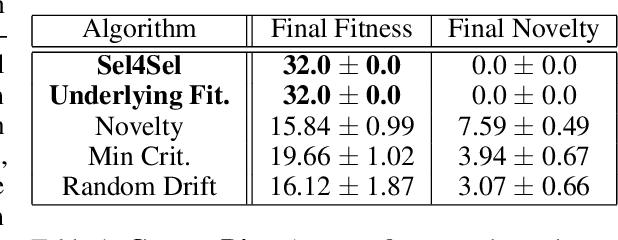

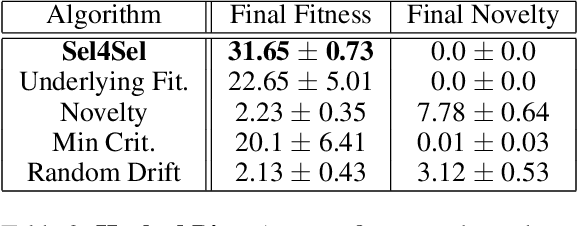
Abstract:Inspired by natural evolution, evolutionary search algorithms have proven remarkably capable due to their dual abilities to radiantly explore through diverse populations and to converge to adaptive pressures. A large part of this behavior comes from the selection function of an evolutionary algorithm, which is a metric for deciding which individuals survive to the next generation. In deceptive or hard-to-search fitness landscapes, greedy selection often fails, thus it is critical that selection functions strike the correct balance between gradient-exploiting adaptation and exploratory diversification. This paper introduces Sel4Sel, or Selecting for Selection, an algorithm that searches for high-performing neural-network-based selection functions through a meta-evolutionary loop. Results on three distinct bitstring domains indicate that Sel4Sel networks consistently match or exceed the performance of both fitness-based selection and benchmarks explicitly designed to encourage diversity. Analysis of the strongest Sel4Sel networks reveals a general tendency to favor highly novel individuals early on, with a gradual shift towards fitness-based selection as deceptive local optima are bypassed.
Exploring open-ended gameplay features with Micro RollerCoaster Tycoon
May 10, 2021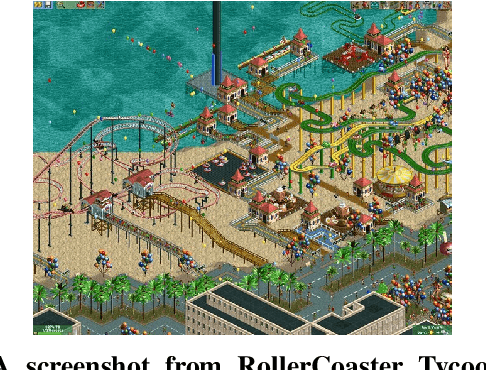
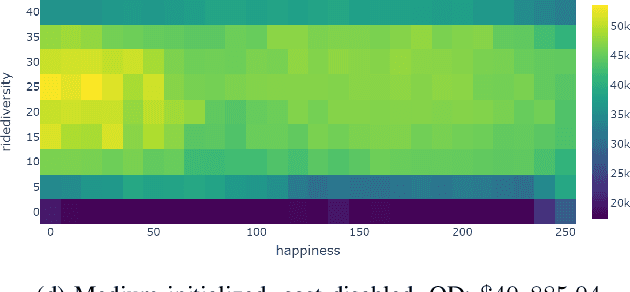
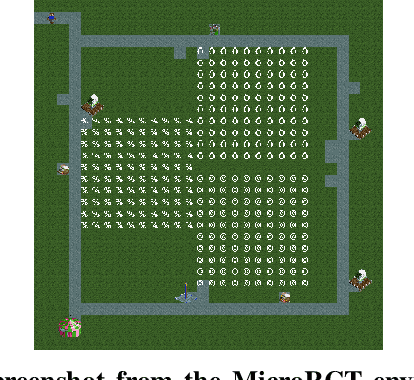
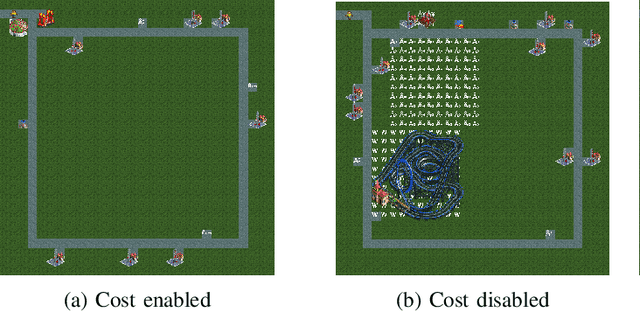
Abstract:This paper introduces MicroRCT, a novel open source simulator inspired by the theme park sandbox game RollerCoaster Tycoon. The goal in MicroRCT is to place rides and shops in an amusement park to maximize profit earned from park guests. Thus, the challenges for game AI include both selecting high-earning attractions and placing them in locations that are convenient to guests. In this paper, the MAP-Elites algorithm is used to generate a diversity of park layouts, exploring two theoretical questions about evolutionary algorithms and game design: 1) Is there a benefit to starting from a minimal starting point for evolution and complexifying incrementally? and 2) What are the effects of resource limitations on creativity and optimization? Results indicate that building from scratch with no costs results in the widest diversity of high-performing designs.
Say "Sul Sul!" to SimSim, A Sims-Inspired Platform for Sandbox Game AI
Aug 25, 2020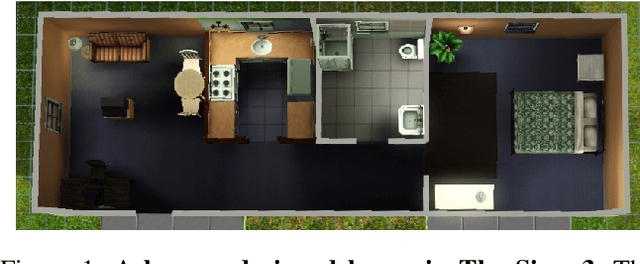
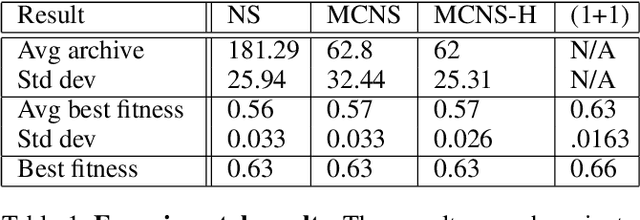
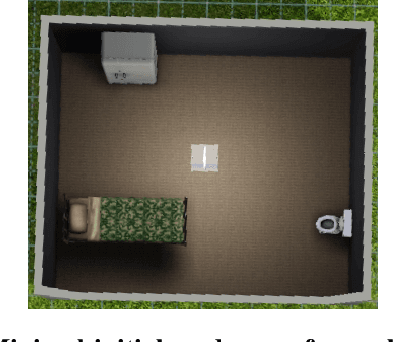

Abstract:This paper proposes environment design in the life simulation game The Sims as a novel platform and challenge for testing divergent search algorithms. In this domain, which includes a minimal viability criterion, the goal is to furnish a house with objects that satisfy the physical needs of a simulated agent. Importantly, the large number of objects available to the player (whether human or automated) affords a wide variety of solutions to the underlying design problem. Empirical studies in a novel open source simulator called SimSim investigate the ability of novelty-based evolutionary algorithms to effectively generate viable environment designs.
Co-generation of game levels and game-playing agents
Jul 16, 2020



Abstract:Open-endedness, primarily studied in the context of artificial life, is the ability of systems to generate potentially unbounded ontologies of increasing novelty and complexity. Engineering generative systems displaying at least some degree of this ability is a goal with clear applications to procedural content generation in games. The Paired Open-Ended Trailblazer (POET) algorithm, heretofore explored only in a biped walking domain, is a coevolutionary system that simultaneously generates environments and agents that can solve them. This paper introduces a POET-Inspired Neuroevolutionary System for KreativitY (PINSKY) in games, which co-generates levels for multiple video games and agents that play them. This system leverages the General Video Game Artificial Intelligence (GVGAI) framework to enable co-generation of levels and agents for the 2D Atari-style games Zelda and Solar Fox. Results demonstrate the ability of PINSKY to generate curricula of game levels, opening up a promising new avenue for research at the intersection of procedural content generation and artificial life. At the same time, results in these challenging game domains highlight the limitations of the current algorithm and opportunities for improvement.
Mapping Hearthstone Deck Spaces through MAP-Elites with Sliding Boundaries
Apr 24, 2019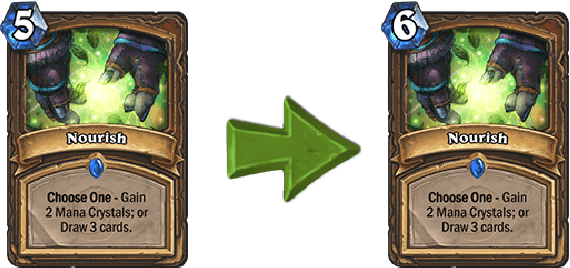
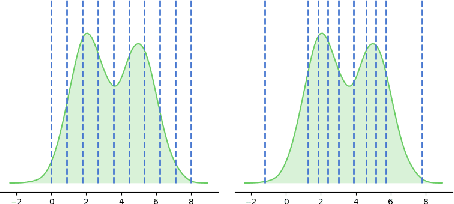
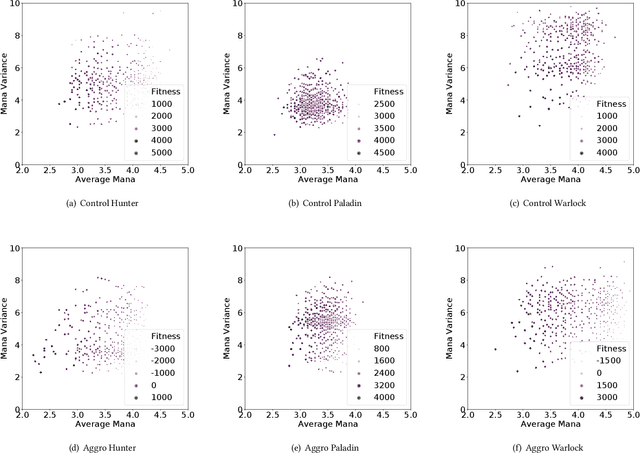
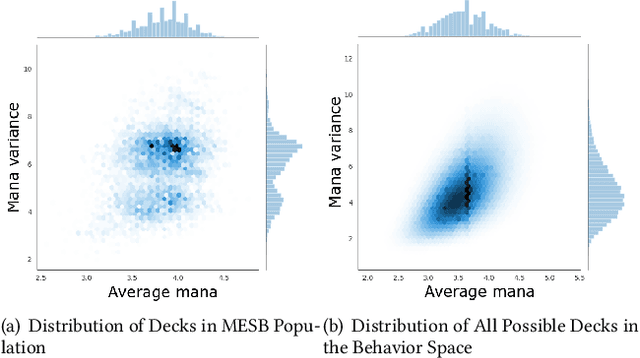
Abstract:Quality diversity (QD) algorithms such as MAP-Elites have emerged as a powerful alternative to traditional single-objective optimization methods. They were initially applied to evolutionary robotics problems such as locomotion and maze navigation, but have yet to see widespread application. We argue that these algorithms are perfectly suited to the rich domain of video games, which contains many relevant problems with a multitude of successful strategies and often also multiple dimensions along which solutions can vary. This paper introduces a novel modification of the MAP-Elites algorithm called MAP-Elites with Sliding Boundaries (MESB) and applies it to the design and rebalancing of Hearthstone, a popular collectible card game chosen for its number of multidimensional behavior features relevant to particular styles of play. To avoid overpopulating cells with conflated behaviors, MESB slides the boundaries of cells based on the distribution of evolved individuals. Experiments in this paper demonstrate the performance of MESB in Hearthstone. Results suggest MESB finds diverse ways of playing the game well along the selected behavioral dimensions. Further analysis of the evolved strategies reveals common patterns that recur across behavioral dimensions and explores how MESB can help rebalance the game.
 Add to Chrome
Add to Chrome Add to Firefox
Add to Firefox Add to Edge
Add to Edge